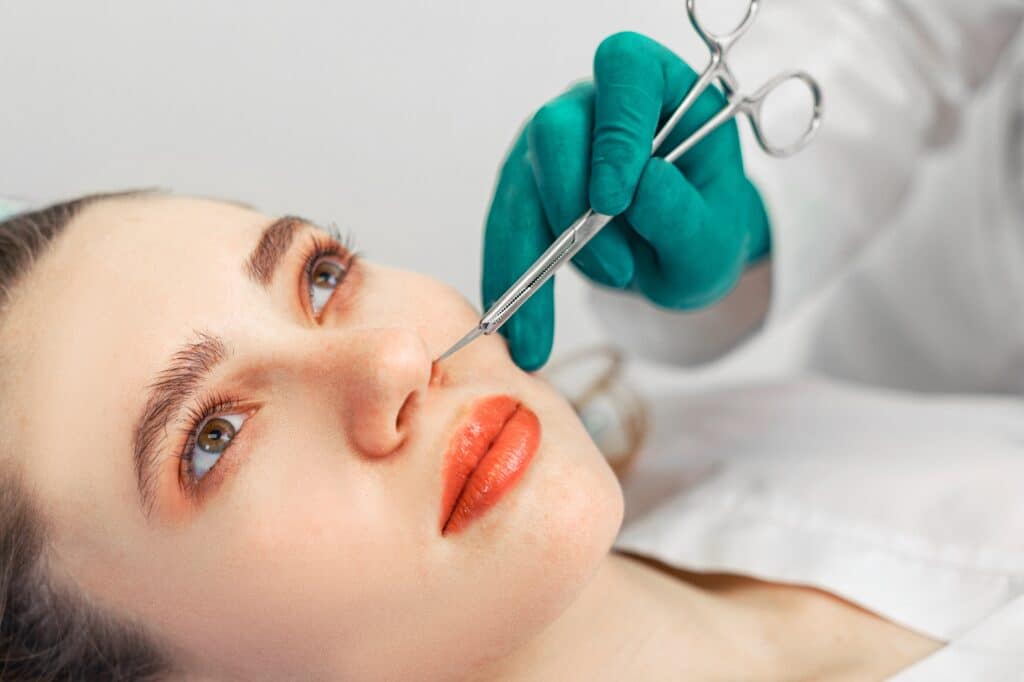Preservation rhinoplasty (PR) is a new surgical technique and approach to rhinoplasty. Rather than rebuilding the nose, the aim is to preserve as much of its existing structure as possible. Preservative rhinoplasty surgery seeks to avoid weakening the structure of the nose and creating unnatural contours. Therefore, changes are achieved by preserving ligaments or altering nasal tip support without dismantling the entire structure.
While the term “preservation rhinoplasty” has become more popular since 2018, the idea has a long precedent. The following overview of PR includes information on what it is and how it differs from traditional rhinoplasty. We tell you about the techniques of this nose job in Turkey, its benefits, and post operative recovery times.
Key Principles and Techniques in Preservation Rhinoplasty

Preservation rhinoplasty maintains as much of the natural anatomy as possible while still achieving aesthetic and functional refinement. Rather than focusing on reconstruction, this approach emphasizes controlled modification, reshaping and repositioning, and structural conservation.
A key preservation rhinoplasty technique used in rhinoplasty to preserve the nose’s corner is called dorsal preservation. Instead of reducing the ‘hump’ by removing bone, surgeons modify the bridge as a single unit. The surgeon moves the nasal bridge down and reposition it while making sure the tissue above it is not damaged.
It’s also important to protect the soft tissue around the eye and the nasal ligaments. During surgery, the skin of the nose and the important structures inside it are protected carefully. Keeping these connections helps to shape the tip and keep the nose stable. This reduces swelling after surgery and helps the healing process.
Preservation rhinoplasty uses the patient’s own nasal structure, so there is much less need for extra cartilage grafts. When grafts are needed, they are usually used more carefully to improve the native anatomy rather than replacing it. This makes the surgery less complicated and reduces the chance of problems with the graft.
Finally, osteotomies and osteoplasty are very important in getting the natural-looking results you want. In dorsal preservation, precise cuts or rebuilds are made to allow the nasal bones and the back to move in a controlled way.
Patient Selection: Who Is a Good Candidate
- Expectation: Patients wanting dramatic reductions or complex tip modifications may need more conventional methods. Preservation produces more subtle changes.
- Anatomic suitability: Size and shape of hump, nasal bones, thickness of skin, prior surgeries, or functional problems. Some aspects may limit preservation.
- Skin envelope quality: Thinner skin tends to show contour more, so preserving structures helps. With thick skin, some risk of complications may persist.
- Functional concerns: Breathing issues, septal deviations, internal nasal valve collapse — these must be addressed. Preservation rhinoplasty can improve function but may not be enough.
AM I A GOOD CANDIDATE FOR RHINOPLASTY?
Advantages & Potential Benefits
Preservation rhinoplasty offers several advantages (based on current literature and case series). Some of the claimed or observed benefits include:
- More natural appearance
- Reduced need for grafting
- Long-term stability
- Potentially quicker recovery
- Better function
When It May Not Be Ideal
Although preservation rhinoplasty has many benefits, it is not suitable for everyone. In some cases, it might be better to have a more traditional nose tip correction in Turkey. For example, patients with thick bones and cartilage may need some of it to be removed to achieve the desired shape. In these cases, more extensive reconstruction may be needed.
Preserving the nose can also be difficult if the patient has already had an operation. Then you will need revision surgery and revision rhinoplasty in Turkey. Patients who are seeking dramatic results may also find that PR cannot deliver such significant changes. Finally, individuals with poor skin quality may not experience ideal redraping, which can affect the final contour.
The new kind is a modern but natural step forward in nose surgery. By focusing on conserving rather than removing, it aims to achieve results that are natural, stable, and harmonious. While it is not suitable for everyone, it offers a stylish solution that combines beauty and practicality.